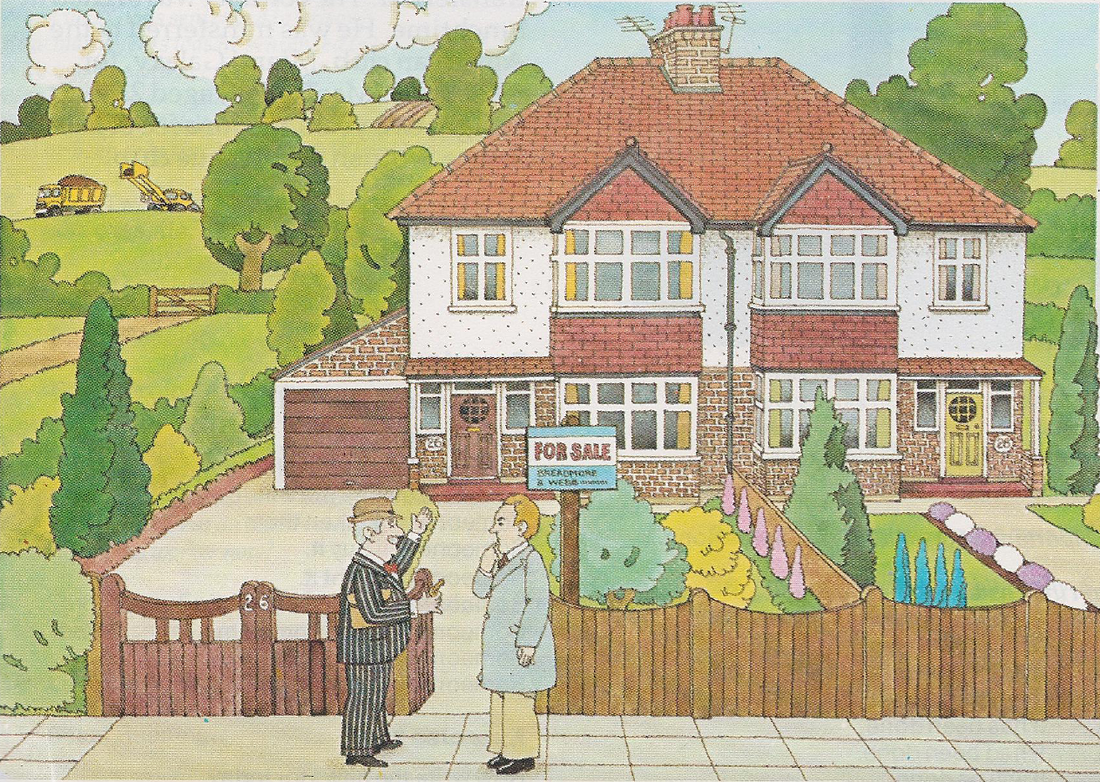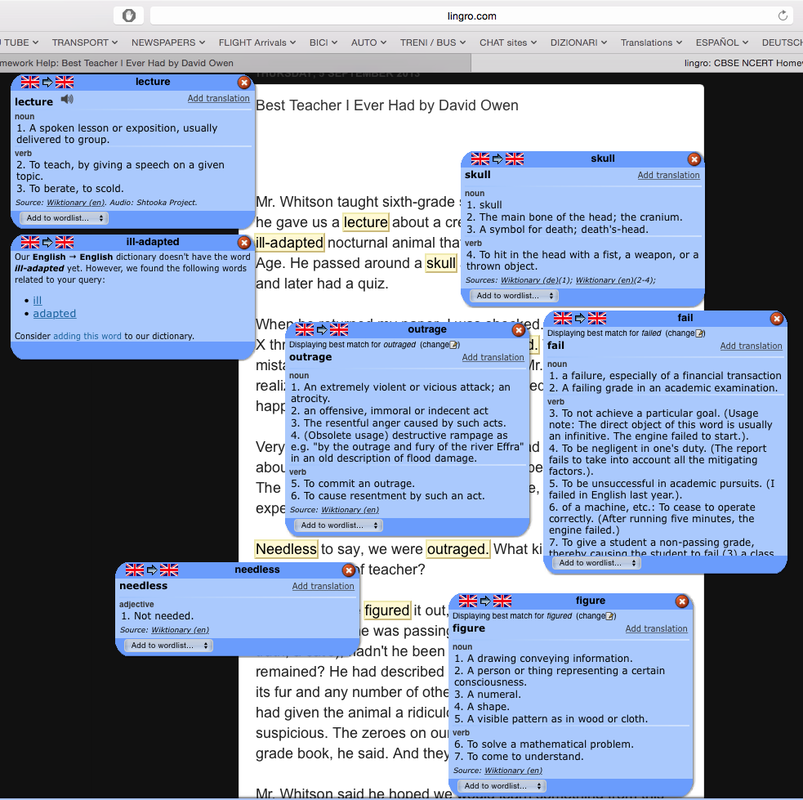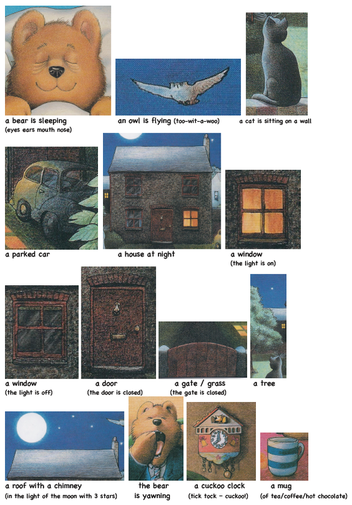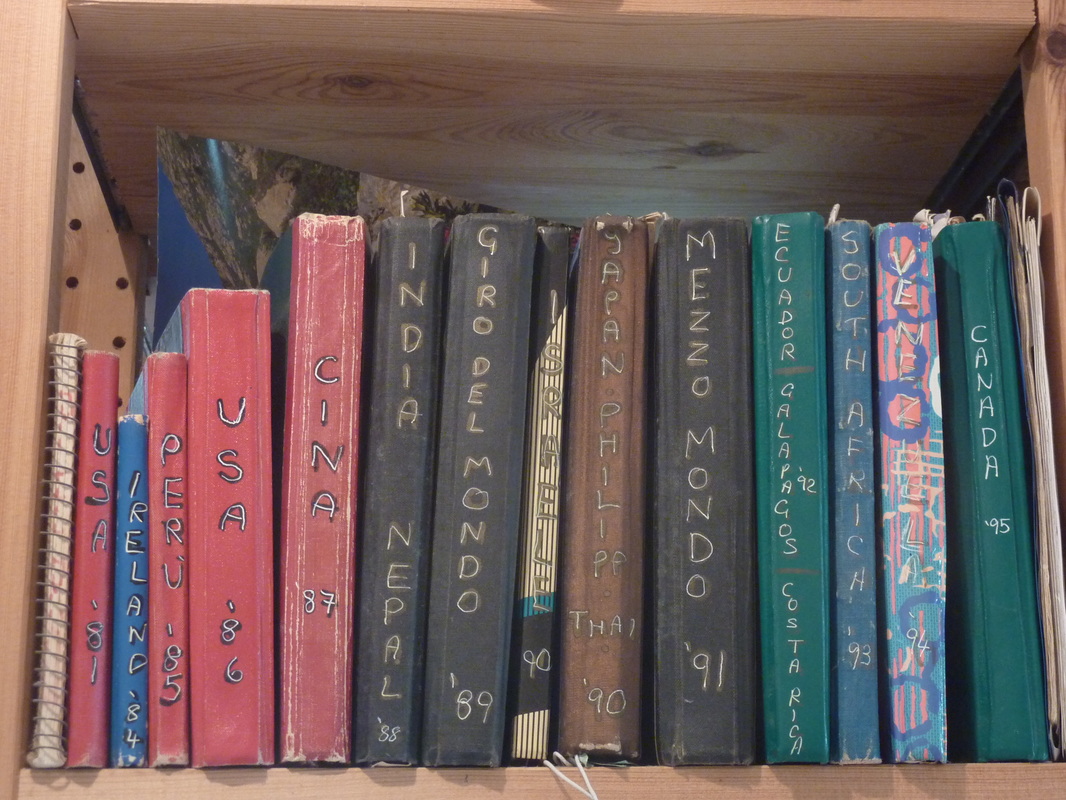|
Today I'm here to talk to you about how graded readers can improve your English. Now I know you are always very busy and that reading is something you can't do whilst you're doing other activities. However, there is a fantastic website which I'd like to recommend to you because you can download an e-book absolutely free and you can download the audio accompanying it. That means you use the audios whilst you're driving to work and you have the PDF or even mobi for kindle or epub for Apple devices so that you can read them, too. You can read these books and whilst you're listening or you can listen and read separately but the fact that you're using your ears to listen and your eyes to read these are two senses which will help you consolidate the expressions such as phrasal verbs, vocabulary, the idioms and the grammatical construction of a sentence. This means you won't have to use traditional text-books to practice your English because you'll be picking it up very naturally as if you were in full immersion. That's why I recommend you read a lot but these books are especially good because they are graded according to levels and this means you'll start with a low level and you won't have the frustration that it's too difficult for you. Then as you improve, as you experience success, you'll be motivated to go to the next level and if you do it very gradually you'll notice the improvement very, very quickly and English will become very natural for you. It'll actually be very good if you sometimes stop an audio and then just repeat it with the same intonation and so also improve your fluency. The website is called https://english-e-reader.net and these are graded readers. You can download them or read them online for FREE. The website is divided into elementary, pre-intermediate, intermediate, upper-intermediate and advanced. These adapted books are one of the best and most interesting ways to increase your vocabulary and improve all your English skills quickly and easily. There is a very wide choice of books of all kinds from classics to quite modern books so you can really choose anything. Every book will show you the book cover, give you a small description of what the story is about, tell you how many total words there are and how many unique words. It'll also give you a few words that you may not know. What's exciting is that you can also download the mp3 versions so that you get them all. I think it's quite exciting actually because you can also have the audios to listen to when you don't have time to read. That way you make sure you are 'reading' a little every day but also practicing your listening skills. There are lots of audiobooks on the web but very often they've been it read by volunteers and they're not a very professional nor particularly exciting. Instead these are really read by professional actors in an exciting way with background music to give the atmosphere just like in films. That's why I recommend this website rather than other ones because at NO COST you have a really professional audio. I suggest you use this website so that you can improve your English by practicing daily listening, reading or listening and reading together. Tell me if this suggestion was useful to you and I'd love you to comment in the box below how you get along with them. Your fluency teacher, Susan
23 Comments
Was your textbook in English written by a native speaker? Today I'd like to talk to you about the importance of a book being written by a native speaker if you have to learn English or other subjects in the English language. I was in the Netherlands for a few days and I was sitting on a bus when the girl next to me pulled out her English-language textbook. She was going to university and she was revising. On the first page of her open book it said 'Present Time' and all the exercises were referring to the Present Tense so I thought it was unusual. Then and as she flicked through the book she got to the page where it said the 'Past Time' and again I was quite surprised because in English we don't say 'Present Time' and 'Past Time' but we say present tense and past tense - I didn't see the cover of the book but I presume that it was written by a Dutch person because in other languages they do speak about 'time' but in British English we say “tense” so this brings me to the subject which I've been thinking about for a long time. I've been teaching for about 40 years now and very often students will come to me with their book. It may not necessarily be an English language learning book, it could be an English literature textbook, a history book, a philosophy book, a university text on architecture but in any case a textbook that has been written by a non-native speaker. Now I know that non-native speakers have a lot of advantages because they can teach people remembering the difficulties they went through, so I'm not against non-native speakers but I do find that when I read a textbook which was written by a non-native there may not be actual mistakes but the words just don't flow – they don't sound natural and you often lose the information in the flowery language. In the past at least three English literature books which I read, written by Italian non-native speakers, were correct grammatically and very fluent; however they just didn't sound English because English native speakers, when they talk about history or literature, are very concise: they give the information, they don't go round in circles, while in other languages, the Latin-based languages for example, they tend to be very flowery, they don't go straight to the point. So when I was reading these books, trying to help my students, I realized that had they been written in another language it would have been fine but the English just don't do that, the English go straight to the point in textbooks (they are not like descriptive novels). The other day an architecture student had to summarize a 15 page article by a Portuguese author written in English. I tried reading it myself and it was almost impossible to separate the information from all the beautiful flowery descriptive language. This is probably perfectly acceptable in Portuguese but made the task daunting. I've also noticed that some English language learning textbooks have two authors of their own country plus one who is an English native speaker. The impression I have there is that the book was actually written by the non-native speakers and then probably given to the native speaker to check for mistakes. Now I don't know whether the native speaker reads every single line or whether he just browses through it but those are the books where I find there are no mistakes however that they just don't sound as if they were written by a native speaker therefore that name doesn't really count as an author. In my opinion, if you have a choice, buy books written by native speakers. Then if your school sets books which were not written by native speakers, why not ask them and find out if it's possible to have a different kind of textbook. The book I was looking at two days ago on the bus, the one which said present time and past time didn't actually have any other mistakes, it was explaining the grammar very well but the actual title was wrong so I do believe in using language learning textbooks being written by native speakers even if non-native speakers are equally good, if not better than native speakers, at explaining the language because they've been through the learning process while native speakers haven't, so non-natives can maybe relate better to students. Therefore, non-native speakers are a very valid choice if they're explaining things to you but maybe not such a good choice when writing textbooks. I hope you find this advice useful. Susan Check out my YouTube video: STOP TRANSLATING!!! DESCRIBE, DEFINE and EXPLAIN the meaning IN CONTEXT! - Susan’s Student Tips26/4/2017 Did you know that TRANSLATING is very BAD FOR your FLUENCY and generally for learning to speak English well? Now why is that? Well, translating is really, really bad for your fluency because in other languages or in every language, actually, the WORDS are PUT TOGETHER in DIFFERENT COMBINATIONS so no language will have the same combination of words to express an idea, to express the concepts and therefore translating makes no sense because you will have the exact meaning very often word for word but when you want to reuse that expression, you'll put together the words that you have in your mind, you'll translate them and not necessarily put them together in the correct order. So what does that mean? Let me give you an example: for years I've been fighting a problem that many of my students have when they talk or write about themselves and the typical phrase they say is: "my family is composed of four members" or "my family consists of four people", in any case always wrong compositions of words, so what should one really say? One should really say "there are four people in my family" that's what a native speaker would say or "there are four of us in my family" or "my family is made up of four people". The other words are technically and grammatically correct but no native speaker would say them so it makes no sense to use words that don't sound natural, that no native speaker would say. That's why translating is really, really bad and the only way to overcome this is to IMMERSE yourself IN THE LANGUAGE, first of all but secondly to make sure that you USE DEFINITIONS RATHER THAN TRANSLATIONS that so when you don't know what something means, look it up in the dictionary of the same language you are studying, for example English-English and look for the definition or ask a person what it means by explaining it to you, defining it so at that point you'll have the expression embedded in your mind in the correct format and you won't make a mistake - you'll just learn" there are four people in my family" or "there are four of us in my family" and you won't even think of using any other expression. Translating should be used at a very, very high level when you are really advanced to understand abstract concepts which are not so easy to define so I'm not saying that translating is absolutely wrong but certainly it should be used for the very occasional word which doesn't fit in any context that you can define and understand, so practically very rarely. Another example I can give you is that there was an expression when I moved to Germany which I presumed meant something and I never ever translated it because it fitted into every context really, really well. However, after three years this word didn't fit into that particular context, so I looked it up in the dictionary and what I had interpreted as its meaning was ninety percent of the time correct but there was a ten percent possibility of using a meaning which was similar to that one but not identical and that's where I needed to use the dictionary because it didn't make any sense to me. In any case, that took place three years after having heard and used this expression perfectly correctly in all contexts. So FORGET TRANSLATING! Try and immerse yourself in the language, listen to a programme, sing songs but also looking at the lyrics so you pick up what I call blocks or chunks of language. It's the chunks you have to learn in the correct sequence of words and then you won't make any mistakes because you'll be saying the complete chunk correctly just very naturally the same way as any native speaker would do so. Therefore that's what I recommend: don't translate, pick up the language by listening, repeating, absorbing the language just as children would do; children absorb the language without translating - they just pick it up from the context. Follow my advice and improve your English! I hope you find this useful. Susan NUMBERS – many students are confident speakers of English, yet when it comes to reading numbers out loud they stop, panic, stutter and nothing comes out. So instead of practising these unseemingly complicated digits, they shy away from them and never become confident in saying numbers. Yet in reality numbers are not at all complicated if you know the rules. Numbers are everywhere and form an important part of language speaking whether you are a tourist or a businessman. Numbers come in all kinds of formats: they can represent a statistic, a price, a date, a year, a time, a temperature… just to name a few. So let’s have a look at how to say numbers: Presuming everyone knows the basics of numbers from 1 – 100…
unless we are referring to the years between 2000 – 2009
only since the turn of the century in American English it is acceptable to continue this system referring to the year as
Let’s analyse how to say longer numbers easily: 9, 876, 543 - to practise and gain confidence start from the end: 43 – forty three 543 – five hundred and fortythree and- it’s important to always say the AND after the word hundred even if we usually abbreviate it with ‘n ) 6, 543 – six thousand, five hundred ‘n fortythree 76, 543 – seventysix thousand, five hundred ‘n fortythree 876, 543 – eight hundred ‘n seventysix thousand, five hundred ‘n fortythree 9, 876, 543 – nine million, eight hundred ‘n seventysix thousand, five hundred ‘n fortythree as you can see, it’s really easy and only a question of practice. I recommend reading any numbers you see around you – the number of the car in front of you at the traffic light, street numbers and many more surrounding you in daily life… always start from the end until you become confident.
Gain confidence with numbers - the more you practice the easier it gets! You can download this document for easy reference. Hopefully this will have clarified numbers for you. Susan
A REAL BARGAIN is an amusing unit on the PASSIVE TENSE taken from Streamline English Departures (Hartley & Viney, OUP 1983) – my absolute favourite not only for teaching the passive tense but particulary for imparting a culture lesson on Houses in Great Britain. With its beautiful illustrations, rich housing vocabulary and amusing content – it makes a fun lesson on British culture. I usually ask students to read the text taking turns to be the Estate Agent and Mr. Palmer, the prospective buyer, stopping after each paragraph to explain the vocabulary and the passive tense as it develops:
As they read the story I ask very easy listening comprehension questions, paragraph by paragraph, which they do not have so they have to understand them and reread the paragraph to reply. I only explain the vocabulary and cultural habits we have as the story enfolds since I do not want to spoil the amusing ending to the story. Since I believe in full-immersion, I do not translate the vocabulary but define and illustrate on the board. This is also an opportunity for students to compare their homes and cultural housing traditions to the British ones – an opportunity for class discussion. VOCABULARY Estate Agent semi-detached house detached house cottage bungalow block of flats terraced house town house owners roof tiled roof thatched roof flat roof electrical wiring rewired redecorated (wallpaper is very common) wallpaper repainted central heating (as opposed to the old fireplace with the mantelpiece) brick stone services: - dustbins emptied - post delivered - milk delivered (the milkman with his silent electric van early in the morning) motorway It was only when a friend of mine came to visit my home in Italy that he opened my eyes to differences I had never considered: “Wow! You have real marble windowsills!” – British windowsills are made of wood which need to be constantly repainted to stop them from rotting. “You have beautiful wooden doors!” British doors are usually just painted over. “Your floors are solid marble or parquet!” British floors are loose floorboards with some kind of covering: carpet, lino… Any other main differences your students may have noticed watching films? Mine pointed out that in the USA and GB the kitchen sink is always in front of a window – true but I had never noticed. You can download the materials below. I hope you find this activity as useful and enjoyable as I do. Susan
There are teachers who feed information to students whether they like it or not and there are others who teach students to think – the latter are inevitably the best because they not only capture their students’ full attention but leave life-long learning lessons which go way beyond the subject they were teaching. Cattywampus is the story of such a teacher and I use it to practise reading this short piece aloud in class, verify vocabulary comprehension (see below) and get the students to tell us their own Cattywampus stories which we have to decide whether to believe or not. This activity is incredibly engaging for students (which we do in pairs) and the teacher has to inevitably go round helping with vocabulary to express their ideas. If you have an Interactive White Board you can READ IT ONLINE THROUGH LINGRO.COM to get vocabulary explanations: http://cbse-ncert-homework-help.blogspot.it/2013/09/best-teacher-i-ever-had-by-david-owen.html:
Once you have read the story ask students to answer the questions below the text to tell each other a story: what’s your opinion? Is it a Cattywampus? You can download the STORY with QUESTIONS below. I hope you have fun with this activity. Susan
The last few days before Christmas are marked by LOW CONCENTRATION and HIGH EXCITEMENT built up by all the pre-Christmas activities and the tiring end of the year. I usually reserve these following activities for just this last period and it always captures the students attention.
You can download the links to these activities below. I hope you have fun with these last-minute Christmas activites. Susan
A Christmas classic in two pages to practise scanning and listening comprehension skills is another way of approaching Dickens and acquiring exam skills. I summarized the story to be done in a one-hour lesson so as not to be too tedious and give a sense of completion. I first hand out the story (see download) or project it on the whiteboard and whilst I’m doing so they can skim it but most students already know the story from films or cartoons if they haven’t already read it. I divide the class into teams A and B. I then ask them questions on the text without the students being able to read them and the first person to find the answer in the text gets a point for their team. They have to read out the complete sentence to answer. This activity gives them listening, scanning, reading and pronunciation practice. It's more fun than just reading the story. There is also a GAP-FILL for homework but one has to first collect in the photocopies with the complete story on it. The competitive element makes it an exciting activity even for those participants who would normally be easily bored by reading a story. To encourage weaker or less collaborative students (I’m thinking of some teens) I sometimes nominate those students to receive 2 or 3 points each for their team, making sure there are an equal number of ‘specially nominated’ students in each team so as to be fair. You can download my three sheets below. I hope you find the activity useful and enjoyable. Susan
Children will listen in awe if you read them a captivating story using plenty of expression! The illustrations help comprehension even though I must admit that when I read a story to young learners of English, I read and translate it orally sentence by sentence as I’m going along – recording it for them to listen to again and again. This exception to my rule of never translating is to incentivate children to be patient and hear the story out until the end. Some of the children I teach are still toddlers and until about the age of 10 I feel they need this support. I try to explain the meaning from age 11 upwards rather than translating. In today’s age of technology where everything is ‘consumed’ at full speed or immediately abandoned at the first waning of interest, books start losing their appeal early on in life and so people miss out on so much in the wonderful world of books where your imagination may wander…. Translating for younger children also allows us to enjoy a little more complicated stories rather than limiting ourselves to the few simpler books.
Children’s books have the most wonderful illustrations and so, occasionally, I take a picture and separate the different parts of it together with my students so we can describe the individual details and appreciate their artistic beauty. My students love them. I then laminate these individual parts of the picture and we play games with them to learn the vocabulary and expressions. The most popular and effective game for learning the vocabulary and expressions is ‘Snap’, whereby I say each word or expression as they turn the cards to connect the visual aid with the sound of the word for the younger ones and to teach the pronunciation of the written word to the older ones. After a few games I try to get them to say the words instead. This activity of looking at the illustrations in detail proves to be very popular with my students who then enjoy looking at the details in the illustrations of their own reading books at home. Hope you like this idea! Susan Before having children all my free time was dedicated to globetrotting and I had started writing a book about my travels.
I have always found writing about my personal experiences easier than writing about an imaginary situation which I have never been through. I therefore usually encourage people to base their writing work on something familiar to them and then adapt it to the written assignment making changes where necessary and enriching with adjectives and our imagination. This third post regarding some of my adventures is not only to encourage students to do likewise, thus practising their writing, but to stimulate people into class discussion on the topics students have written about and shared. Many of those stories are outdated as times change, countries develop... Should anyone like to comment & let me know how things have changed since I visited these countries, it would be welcome feedback. A WEARY TRAVELLER'S TALES Tragicomic Episodes from a Globe-Trotter's Diary As a young, well-travelled globe-trotter, I prefer visiting countries in order to get to know the people, their customs and traditions, rather than only seeing the sights from an air-conditioned bus after having left an anonymous first-class hotel. On my travels I have come across many tragicomic episodes worth recounting, which are not only amusing in themselves but offer a great insight into the ways and being of different peoples in far off countries. The best way to appreciate other mentalities and ways of life is to try and integrate oneself with the people by travelling with local forms of transport, eating in local restaurants and sleeping in hotels where one can mix with the locals rather than with tourists. CHINA Part 1 (written in 1987): Whichever form of transport one chooses in China, it is always an adventure. Trains for the foreigner seem to be the most exciting. The communications system is extremely poor so that one can only make seat/couchette reservations at least six days in advance and only from the original station of departure. If you happen to be travelling through the country and stopping off to visit towns for less than six days, as was my case, you can forget trying to make a reservation. Reservations cannot be made when boarding at intermediate stations, since they have no way of knowing which seat/couchettes were booked from the original station of departure. The only hope is to try once on the train. One of our longest train journeys started in Xian, where one can see the famous terracotta army. We managed to book two 'hard seats' (the other class is 'soft seats') and they turned out to be as hard as ever, with very straight backrests. Actually, it was quite interesting to see that once seated, everyone took out a little towel and hung it on a hook above their seats. I later discovered this served to wipe down the continuous streams of sweat that are inevitable in the summer heat despite the numerous fans (which for some reason work when there is the breeze caused by the train speeding along, but do not work when the trains stop at the stations, so that the heat is even more stifling). The next ritual for each passenger was to put a tin cup with lid on the little table jutting out between the facing seats. Into these they added a few tea leaves. Moments after the train left an attendant passed by filling the cups with boiling water from a giant kettle, kept warm on a fire burning between carriages. Thus began our scheduled five hour night journey to Luoyang, where we were to visit the Longmen Caves. Not having found room in the couchettes, we spent the night sharing our two reserved 'hard seats' with another two Chinese who managed to squeeze in, one of whom fell asleep with his head nodding on my shoulder. Eight sleepless hours later we got off at our destination. Having spent the day visiting Luoyang's sights, we bought our onward journey tickets to Beijing. No kind of reservation at all, of course, since this was an intermediate stop and reservations could only be made at Xian. The train was due to leave at 7.30 p.m. but on showing our tickets, we were told that the train was twelve hours late! Considering that Xian is officially five hours journey away, this seemed to be quite a record! We decided to catch the next train which brought us to Zengzhou, on the junction with the Beijing line. Whether this was unacceptable because the Chinese only catch direct trains, or because our tickets were only valid for the direct train was never clear to us. However, amongst heavy protest from the station attendants we boarded the train. At 11.30 p.m. we were at Zengzhou. According to our interpretation of the all-Chinese timetable, the next train to Beijing left at midnight. We lined up to have our tickets amended. After much incomprehension, obviously because what we were doing was not usual, our tickets were updated and we were accompanied to the waiting room area reserved for those leaving on the 6.00 a.m. train. We therefore settled down to our second sleepless night, hoping to steal a few hours nap by resting against each other. Impossible! A uniformed guard walked through the waiting room every half hour and violently shook awake anyone even vaguely dozing. There may have been a "No Dozing!" sign on the wall, but to us illiterate in the Chinese language, it was certainly not apparent. The journey to Beijing was no more eventful than any other that has been spent sitting on a train floor for ten consecutive hours in sweltering heat. However, it was fascinating watching with what dexterity small children were able to manoeuvre their chopsticks whilst eating on a jolting train. Unfortunately the hygienic advantages of modern packaging meant that all polystyrene lunch boxes were automatically thrown from the window of the moving train, littering the still medieval looking Chinese countryside. Subsequent shorter train journeys acquainted us with interesting games that the Chinese love to play. But however clean we all were when we boarded, on arrival our clothes were all a grubby grey, not to mention the dirt under our finger nails. It was only after quite a few trips that we realised this filth was due to the fact that the trains are all run on coal, leaving a sooty trail. For someone born in the electric/diesel train era, this was quite a revelation. * * * CHINA to be continued .... next episode coming soon! Have you ever had any tragi-comic experiences? Susan Repetitive NURSERY RHYMES with their easy rhythmic tunes and well-known NURSERY TALES lend themselves to SINGING and ACTING: two activities which children love doing!! Many years ago I ADAPTED three NURSERY TALES in increasing difficulty to RECYCLE the most important LANGUAGE we had learnt during the school year. Children loved it and parents enjoyed watching their children's progress. HAVING FUN was another key element to making sure they learnt EXPRESSIONS IN A MEANINGFUL CONTEXT. NURSERY RHYMES can also be ACTED OUT whilst they are being SUNG to consolidate their meaning and enable children to pronounce somewhat complicated sentences to PAVE THEIR WAY TO FLUENCY... GOLDILOCKS is the second in order of difficulty of the three to download with the pronunciation guide as well to help children practise alone at home. (See previous post dated 9th July 2015 for the easier LITTLE RED RIDING HOOD). In those days children had no other way of practising autonomously. Nowadays I prefer to RECORD AUDIOS of the pronunciations for them TO LISTEN TO REPEATEDLY all collected in a Dropbox folder for easy access. Try these out! Hope you have fun with it! Susan
This second post regarding some of my adventures is not only to encourage students to do likewise, thus practising their writing, but to stimulate people into class discussion on the topics students have written about and shared.
I have always found writing about my personal experiences easier than writing about an imaginary situation which I have never been through. I therefore usually encourage people to base their writing work on something familiar to them and then adapt it to the written assignment making changes where necessary and enriching with adjectives and our imagination. Before having children all my free time was dedicated to globetrotting and I had started writing a book about my travels. Many of those stories are outdated as times change, countries develop... Should anyone like to comment & let me know how things have changed since I visited these countries, it would be welcome feedback. A WEARY TRAVELLER'S TALES Tragicomic Episodes from a Globe-Trotter's Diary As a young, well-travelled globe-trotter, I prefer visiting countries in order to get to know the people, their customs and traditions, rather than only seeing the sights from an air-conditioned bus after having left an anonymous first-class hotel. On my travels I have come across many tragicomic episodes worth recounting, which are not only amusing in themselves but offer a great insight into the ways and being of different peoples in far off countries. The best way to appreciate other mentalities and ways of life is to try and integrate oneself with the people by travelling with local forms of transport, eating in local restaurants and sleeping in hotels where one can mix with the locals rather than with tourists. JAPAN (written in 1990): The Japanese are notoriously clean, leaving their street shoes at the front door. For the uninitiated foreigner this means a lot of practice is needed in slipper changing. Japanese Ryokan are small, but homely hotels in true Japanese style. At the entrance one encounters rows of street shoes neatly lined up under the first step which leads inside. On the step are numerous slippers ready to be donned by anyone who wishes to enter. Once inside these slippers are only to be worn in the halls, never in the rooms, which have 'tatami' mat floors on which one walks in socks or barefoot. Just inside the bathroom, whether private or shared, are other slippers. This means that if I leave my room to use the toilet, I must put on my hall slippers and take them off outside the toilet, because the toilet slippers are just inside. And wo betide the tourist who is caught walking around the hall with the toilet slippers he forgot to slip off again!! * * * Precision is another asset of the Japanese and having lived in Germany, I am quite used to it. However, lining up to catch arriving trains in Japan certainly amazed me. If you buy a ticket with a reservation, you need only to look at the numbered signs along the platform. Besides pointing out where your carriage will stop, the markings on the ground tell you exactly where to stand so you will enter the door which is nearest to your seat number. In fact the train halts exactly with its doors parallel to these markings. This is amazing considering the fact that the Shikansen Bullet Train travels at speeds of up to 250km per hour! * * * In a country like Japan, where a large population is concentrated in a small area, getting away from it all can be most difficult. One Sunday we had the brilliant idea of going to Hakone, a famous national park just outside Tokyo, in order to spend a nice relaxing day next to the mountain lake, hoping to catch a glimpse of Mount Fuji peeking from behind the clouds and carrying a bathing costume to wear in one of the thermal pools of the area. At 8.00 a.m. on a Sunday morning Tokyo station was unusually busy with extra stalls set up to sell "bento"s (packed lunches) and families loaded with small rucksacks hurrying to the trains. Once off the Shinkansen train at Odawara station, we lined up to get our onward tickets. A fifteen minute train ride brought us to Yumoto but by the time we got off, our next train was jam packed and we crammed in to stand like sardines for the half hour trip. At Gora a twenty-minute queue allowed us to get tickets for the cog-wheel train in which we actually sat for the very few minutes it took to get to the top, Souzuno. There we queued for another fifteen minutes in order to catch the longest cable car in Asia. The view was impressive and at the first station we stopped off to see some geysers, which were definitely not worth the time we spent waiting to get back on. At the second station we had intended getting off to bathe in the thermal pools but the staff told us we would never get back on, since no empty cars were coming through. At the top, Togendai was where we found our mountain lake but there seemed to be nowhere to relax. We were not able to enjoy the peacefulness we had been looking forward to because the area was just not peaceful. So we lined up to cross the lake on the red and gold painted boat, camouflaged as an old sailing ship and once finally on it, we tried to relax for the forty minutes we stood on the crowded boat. The lake of volcanic origin was extremely beautiful but at that point we were so stressed that we were unable to enjoy it. Not finding anywhere to sit down and relax because the buses were belching black fumes on the lake front, not having even caught a tiny glimpse of Mount Fuji, we decided to take the bus back down and three-quarters of an hour later we were in Yumoto again. On the short train ride to Odawara, we decided to let everyone else rush home to Tokyo whilst we stopped in this calm, uncrowded town of little interest to have a relaxing meal. * * * .... next episode coming soon! Have you ever had any tragi-comic experiences? Susan
Actions can be practiced easily with a fun miming game.
I like to introduce more complicated actions like “popping a slice of toast into the toaster” by providing two teams with a list of less commonly known expressions in a fun miming game. In this manner whilst they are trying to guess what the action represents, they are continuously scanning the various new expressions on the list thereby fixing them in their memory and using them to find out if the action corresponds. In fact, as the game progresses they become faster and faster proving that they are learning the expressions at the same time. There are a few rules to follow: 1. Each team receives the same lists (but I usually give three different sheets to each team – one per person – so that everybody is involved in the search since not everyone in each team has the same sheet and so they cannot ‘sleep’ as they have to contribute if their teammates haven’t got the expression they are looking for). 2. The person who is going to mime picks an expression (you have previously cut the expressions into strips) out of a bag. 3. The person miming does so for their own team so that they are forced to do it well. The team members ask: "Are you ....ing?" Answer: "Yes, I am. / No, I'm not." 4. If the team guesses the first time they gain 3 points, if they guess the second time they get 2 points and if they guess the third time they only get one point. 5. If they still haven’t guessed the opposite time gets to try for one point. 6. If they don’t guess the original team has a go for one point and they alternate until one team wins the point. 7. Then the opposing team starts miming again for three points… The game is always very popular and fun as well as being effective. You can download the worksheets below. Feel free to delete or translate the Italian into another language. Hope you have fun with it! Susan Everyone stumbles at some point on a longer sentence, be it beginner, intermediate or advanced, young or old... but many years ago I read a very simple TRICK which WORKS INFALLIBLY every time and your students gain lots of confidence in a jiffy: prepare saying it backwards! Update: Try out my LISTEN & REPEAT exercises to BOOST YOUR FLUENCY from my Video Course
Also: Try out my LISTENING COMPREHENSION with Susan’s A WEARY TRAVELLER'S TALES on my YouTube Channel:
Poems I find are difficult to present in an appealing way, more so if they are for students of English. Many years ago I attempted a project fueled by my enthusiasm for the MUSICAL CATS in which I presented one T.S. Eliot’s CATS poem a week with comprehension questions of various nature. In those days we listened to the song on cassette but I would recommend showing a You Tube Video to them on the IWB to make it more exciting. For intermediate/advanced students I find that SKIMBLESHANKS the Railway Cat – Musical: CATS is rather fast as it mimics the speed of the train but the poem/song also gives us the opportunity to discuss TRAVELLING BY TRAIN in the past and today on normal trains and luxury trains like the ORIENT EXPRESS. It can also arouse curiosity to watch the entire musical and can lead to interesting discussions. I plan on occasionally posting poems from my CATS Project in the hope they may be of interest to students and teachers and would welcome any feedback. You can download the worksheets to the song below. Feel free to delete or translate the Italian into another language. Hope its another interesting way of learning English! Susan
Also check out MY PLAYLIST
for Susan's ESL Learning Videos (Chants & Songs) https://www.youtube.com/playlist?list=PLrvV_PywFOlxgfR5RpMw7rLsI6ai3yHai I have always found writing about my personal experiences easier than writing about an imaginary situation which I have never been through. I therefore usually encourage students to base their writing work on something familiar to them and then adapt it to the written assignment making changes where necessary and enriching with adjectives and their imagination. As in most families, my life is divided into two eras: BC (before children) and AC (after children). In my BC days all my free time was dedicated to globetrotting and I had started writing a book about my travels. Many of those stories are outdated as times change, countries develop... I would like to start posting some of my adventures not only to encourage students to do likewise, thus practising their writing, but to stimulate people into class discussion on the topics students have written about and shared. Should anyone like to comment & let me know how things have changed since I visited these countries, it would be welcome feedback. A WEARY TRAVELLER'S TALES
Tragicomic Episodes from a Globe-Trotter's Diary As a young, well-travelled globe-trotter, I prefer visiting countries in order to get to know the people, their customs and traditions, rather than only seeing the sights from an air-conditioned bus after having left an anonymous first-class hotel. On my travels I have come across many tragicomic episodes worth recounting, which are not only amusing in themselves but offer a great insight into the ways and being of different peoples in far off countries. The best way to appreciate other mentalities and ways of life is to try and integrate oneself with the people by travelling with local forms of transport, eating in local restaurants and sleeping in hotels where one can mix with the locals rather than with tourists. Ways of the World (written in 1988): Srinigar, the capital of Kashmir in the very north of India, is famous for its houseboats, where tourists stay in fully furnished rooms often with private bathrooms, enjoying exquisite meals in chandaliered dining rooms before lounging in luxuriously carpeted living rooms. We were staying in a more modest two bedroom houseboat with private bathroom, which nevertheless had a beautifully carved table amongst its luxuries in the living room. One evening I was relaxing on my bed when I heard a strange metallic rattling and immediately attributed it to the noise the ropes make when they hit the mast in the wind. Only shortly afterwards did it occur to me that our houseboat had no mast. Then I listened and felt it must be in the room. I took my torch and looked under the armchair: there, in a cage, was a huge rat scratching at the door to get out. I called the owner immediately, who reacted by saying, "Thank goodness you found it. It's been running around the boat for days and so I thought I'd put a trap in your room just in case." It was very unpleasant to know a rat had been roaming our room and that others could be around, but to find out that the owner had let it free on the other side of the lake because he "hadn't the heart to kill it," certainly surprised us. .... next episode coming soon! Have you ever had any tragi-comic experiences? Susan |
Categories
All
Would you like regular English learning & teaching ideas? Subscribe to my blog so you don't miss a post!
AuthorMy name is Susan Brodar, born in London into a multilingual family and brought up bilingual English / Italian. Archives
December 2018
|
|||||||||||||||||||||||||||||||||||||||||||||||||||||||||||||||||||||||||||||||||||||||||||||||||||||||||||||||||||||||||||||||||||||||||||||||||||||||


























 RSS Feed
RSS Feed





